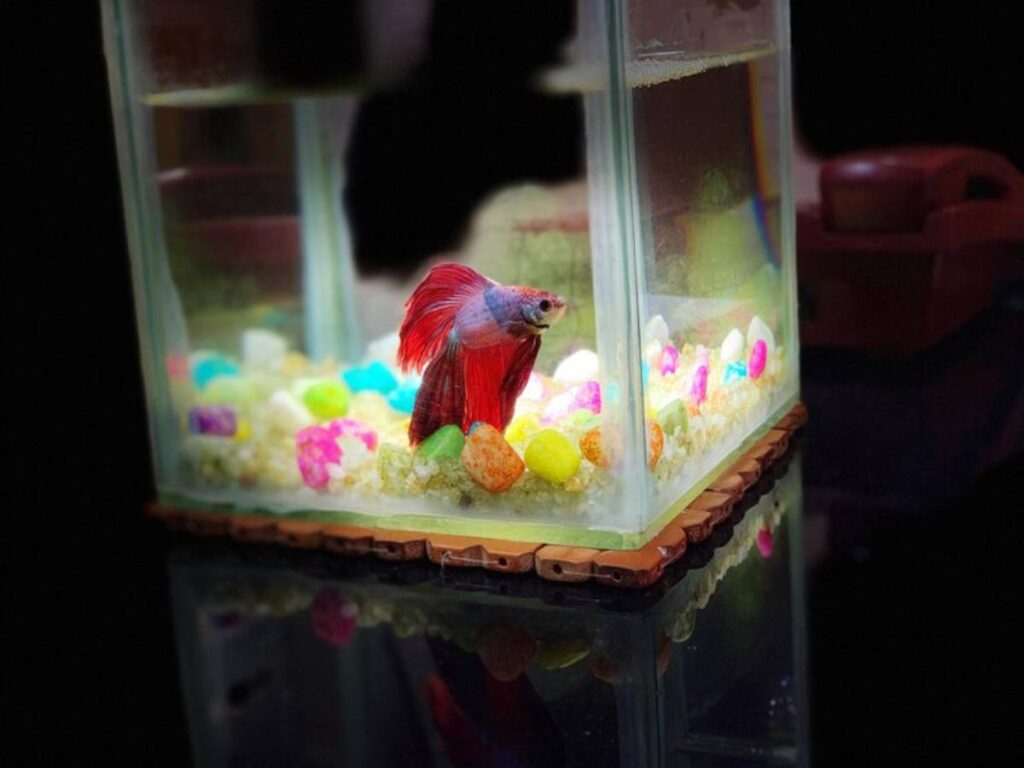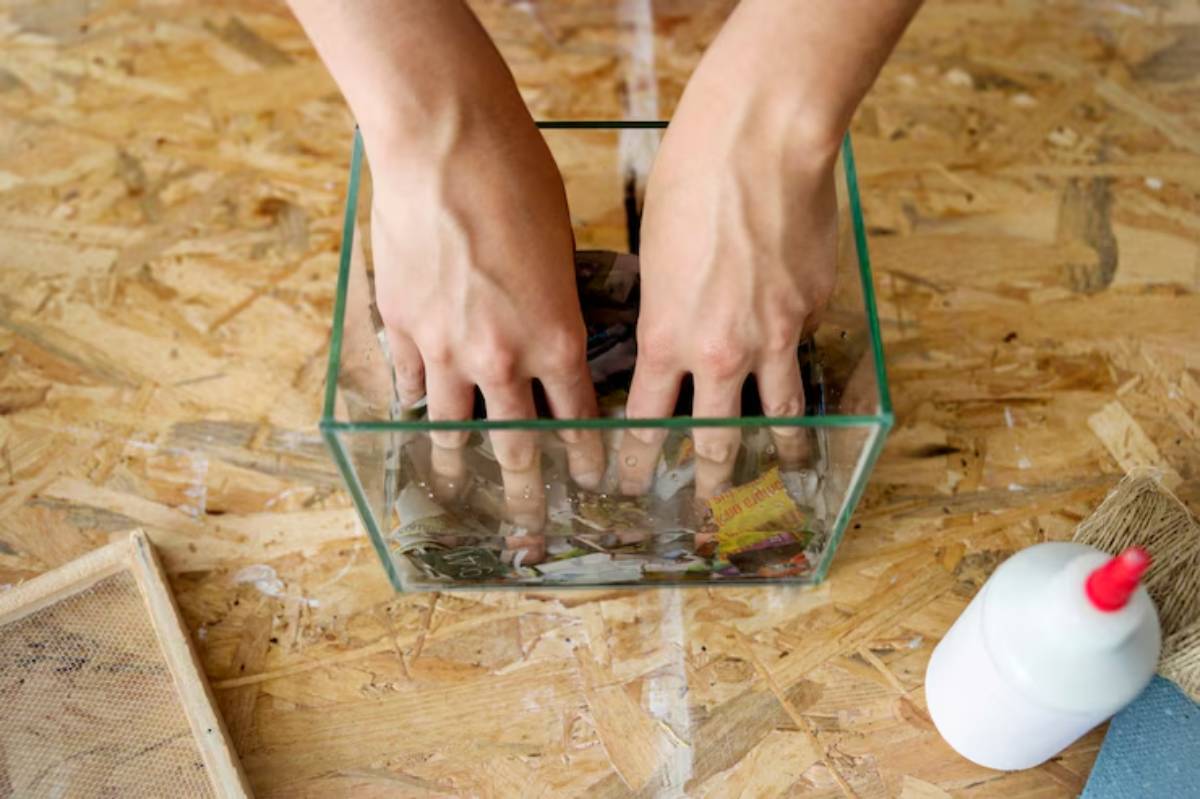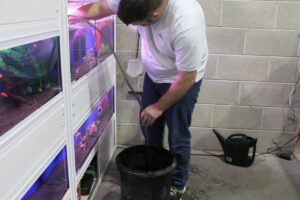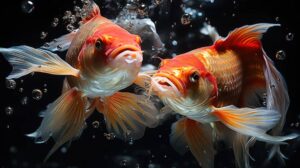The Pets Care Blog

How to Quarantine New Fish Before Adding Them
You’ve just picked out some vibrant new fish from your local aquatic shop or online retailer. They’re bagged, sealed, and ready to go. It’s tempting to open the bag and add them straight to your tank — but doing so could be the biggest mistake you make.
Skipping quarantine is like letting someone with the flu move into your home — no symptoms today, but problems tomorrow. Fish can carry parasites, bacteria, and stress-induced illnesses that spread rapidly in closed aquatic systems.
This guide unpacks the why, when, and how of quarantining new fish, so you can prevent fish disease spread and protect your aquatic ecosystem from unnecessary risk.
Why Quarantine New Fish?
Even healthy-looking fish may be carriers of:
- Parasites (like ich or gill flukes)
- Bacterial infections
- Fungal spores
- Internal worms
Quarantine protects:
- Your existing fish from illness
- Your biofilter from medication shocks
- New fish from stress-related disease post-transport
Important: Some diseases have incubation periods of 7–14 days. Fish may look fine during this time, but quarantine is your safety net.
Quick Reference: Fish Quarantine Setup Checklist
What You Need:
- Spare 20–40 litre tank
- Sponge filter or air-driven filter
- Heater
- Thermometer
- Hiding spots (PVC tubes, silk plants)
- Lid or cover
- Water conditioner
- Optional: UV steriliser, medication on hand (broad-spectrum)
Step-by-Step Guide: How to Isolate New Fish Properly
Step 1: Set Up a Dedicated Quarantine Tank
Your quarantine tank doesn’t need to be fancy, but it must be functional.

- Bare-bottom tanks make cleaning easier and reduce parasite hiding places
- Use a cycled sponge filter or transfer seeded media from your main tank
- Add a heater if you’re quarantining tropical species
- Provide a few hiding spots to reduce stress
Pro Tip: Always use separate nets, siphons, and tools for your quarantine tank to avoid cross-contamination.
Step 2: Acclimate Fish Carefully
Float the bag in the quarantine tank for 15–20 minutes to match the temperature. Then, use the drip or float method to introduce tank water gradually.
- Avoid pouring bag water into your tank
- Transfer fish with a net only
- Dim the lights to reduce stress
Secret Tip: Quarantine is the best time to train new fish to eat prepared food without competition.
Step 3: Observe Closely for 2–4 Weeks
Initial 48 hours: Fish may hide, breathe heavily, or show minor stress. This is normal.
After day 3–7, start watching for.
- White spots (ich)
- Clamped fins
- Stringy or white poop (internal parasites)
- Redness or swelling
- Lethargy or erratic swimming
If symptoms appear:
- Use targeted treatment (e.g., copper for parasites, antibiotics for bacteria)
- Maintain aeration and a stable temperature
- Continue weekly water testing
Step 4: Prevent Disease Spread Proactively

- Feed lightly
- Test ammonia, nitrite, and nitrate every few days
- Perform 25–30% water changes twice a week
- Clean the tank bottom using a dedicated siphon
Don’t rush. Many parasites go through life cycles — interrupting them requires time and vigilance.
When to Use Medications in Quarantine
Some aquarists use “prophylactic treatment” — treating fish even without visible illness. This is controversial but can be useful in high-risk scenarios (e.g., wild-caught fish).
Common preventive meds:
- Praziquantel – internal worms
- Formalin + malachite green – external parasites
- Kanamycin – bacterial infections
Important: Avoid medicating unnecessarily. Misuse can damage your biofilter or harm sensitive species.
When Is It Safe to Transfer Fish to the Main Tank?
After 14–28 days of:
- No visible signs of disease
- Active, healthy behaviour
- Stable appetite
- Clean water parameters
Do one final water change and observe the fish for another 24–48 hours. If everything looks good, net them carefully into your main tank.
Want to make their entry smoother? Read how to introduce new fish without causing stress for acclimation tips.
Best Practices for Long-Term Success
Quarantine All New Arrivals
Even if they come from a “reputable” source, fish can carry hidden infections.
Use a Journal
Track dates, observations, treatments, feeding response, and water readings.
Keep Tools Separate
Avoid sharing nets, buckets, or siphons between quarantine and display tanks.
Always Recycle Your Quarantine Tank
Use media from your main tank or a seeded sponge filter to keep the cycle alive.
Always recycle your quarantine tank — use media from your main tank or a seeded sponge filter to keep the cycle alive. Learn more in our nitrogen cycle setup guide.
FAQs: Quarantining New Fish

Can I quarantine multiple fish together?
Yes — if they come from the same source and show no signs of aggression. Avoid mixing species from different shops.
Do I need to quarantine plants, too?
Yes. Live plants can carry snails, algae, and microscopic pathogens. Soak them in potassium permanganate or bleach solution (10:1 water: bleach) for 1–2 minutes.
What if I have no space for a second tank?
Use a plastic storage tub with an air stone and heater — it works just as well temporarily.
Do I quarantine invertebrates like shrimp or snails?
You can. They may carry algae spores or hitchhiker snails. Use a plant-safe quarantine approach (no copper-based meds).
Can I quarantine fish in my main tank using a divider?
No, pathogens still spread through shared water. A separate, self-contained system is essential for true quarantine.
How do I disinfect quarantine tools after use?
Soak them in a mild bleach solution (1 part bleach to 10 parts water) for 10–15 minutes, then rinse thoroughly and air dry.
What if a fish gets sick after quarantine?
Isolate it again if possible, and treat promptly. Occasionally, stress from relocation can trigger dormant illnesses even after quarantine.
Do I need to quarantine fish bought from the same tank?
Yes — even fish from the same source can develop different symptoms at different times. Always quarantine all new additions.
Should I run a light in my quarantine tank?
Low lighting is best. A dim environment reduces stress and helps fish adjust more calmly to their temporary home.
Conclusion: Quarantine Is Prevention, Not Paranoia
Setting up a quarantine tank might feel like extra work — until it saves your main tank from an outbreak.
By learning how to isolate new fish and follow proper fish quarantine steps, you’re not just protecting your aquatic pets — you’re protecting the ecosystem you’ve worked hard to build.
So take the time. Be patient. And give your new fish a safe start.









